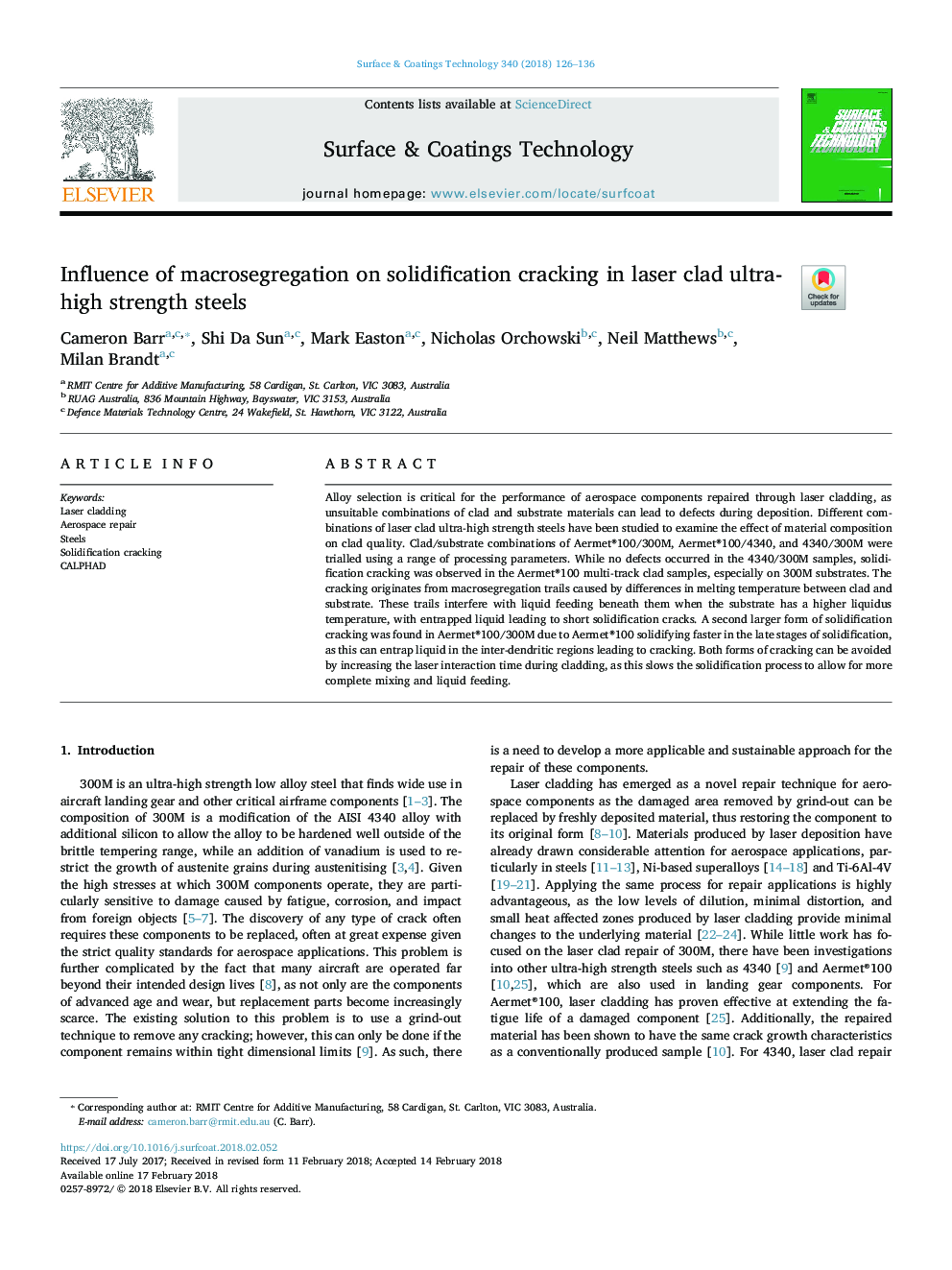| Article ID | Journal | Published Year | Pages | File Type |
|---|---|---|---|---|
| 8024079 | Surface and Coatings Technology | 2018 | 11 Pages |
Abstract
Alloy selection is critical for the performance of aerospace components repaired through laser cladding, as unsuitable combinations of clad and substrate materials can lead to defects during deposition. Different combinations of laser clad ultra-high strength steels have been studied to examine the effect of material composition on clad quality. Clad/substrate combinations of Aermet®100/300M, Aermet®100/4340, and 4340/300M were trialled using a range of processing parameters. While no defects occurred in the 4340/300M samples, solidification cracking was observed in the Aermet®100 multi-track clad samples, especially on 300M substrates. The cracking originates from macrosegregation trails caused by differences in melting temperature between clad and substrate. These trails interfere with liquid feeding beneath them when the substrate has a higher liquidus temperature, with entrapped liquid leading to short solidification cracks. A second larger form of solidification cracking was found in Aermet®100/300M due to Aermet®100 solidifying faster in the late stages of solidification, as this can entrap liquid in the inter-dendritic regions leading to cracking. Both forms of cracking can be avoided by increasing the laser interaction time during cladding, as this slows the solidification process to allow for more complete mixing and liquid feeding.
Related Topics
Physical Sciences and Engineering
Materials Science
Nanotechnology
Authors
Cameron Barr, Shi Da Sun, Mark Easton, Nicholas Orchowski, Neil Matthews, Milan Brandt,
